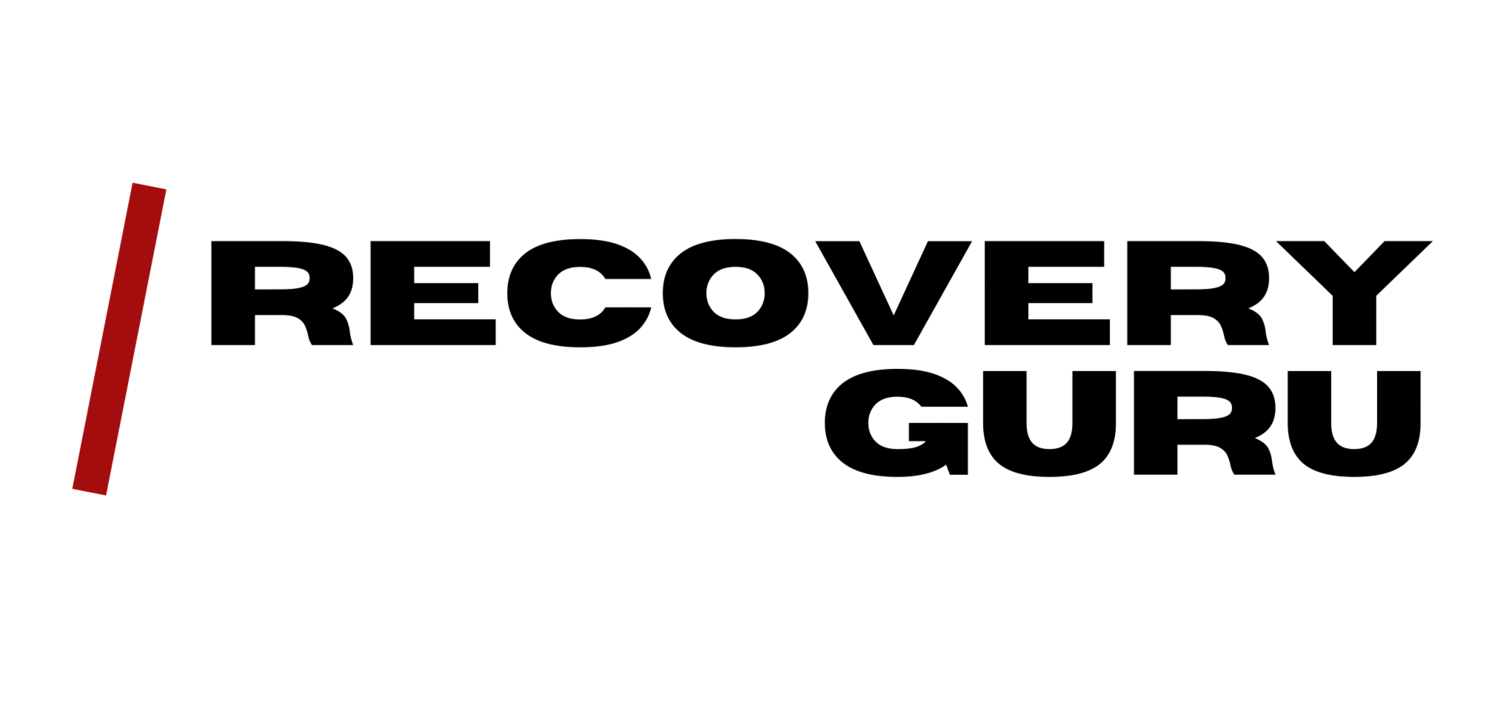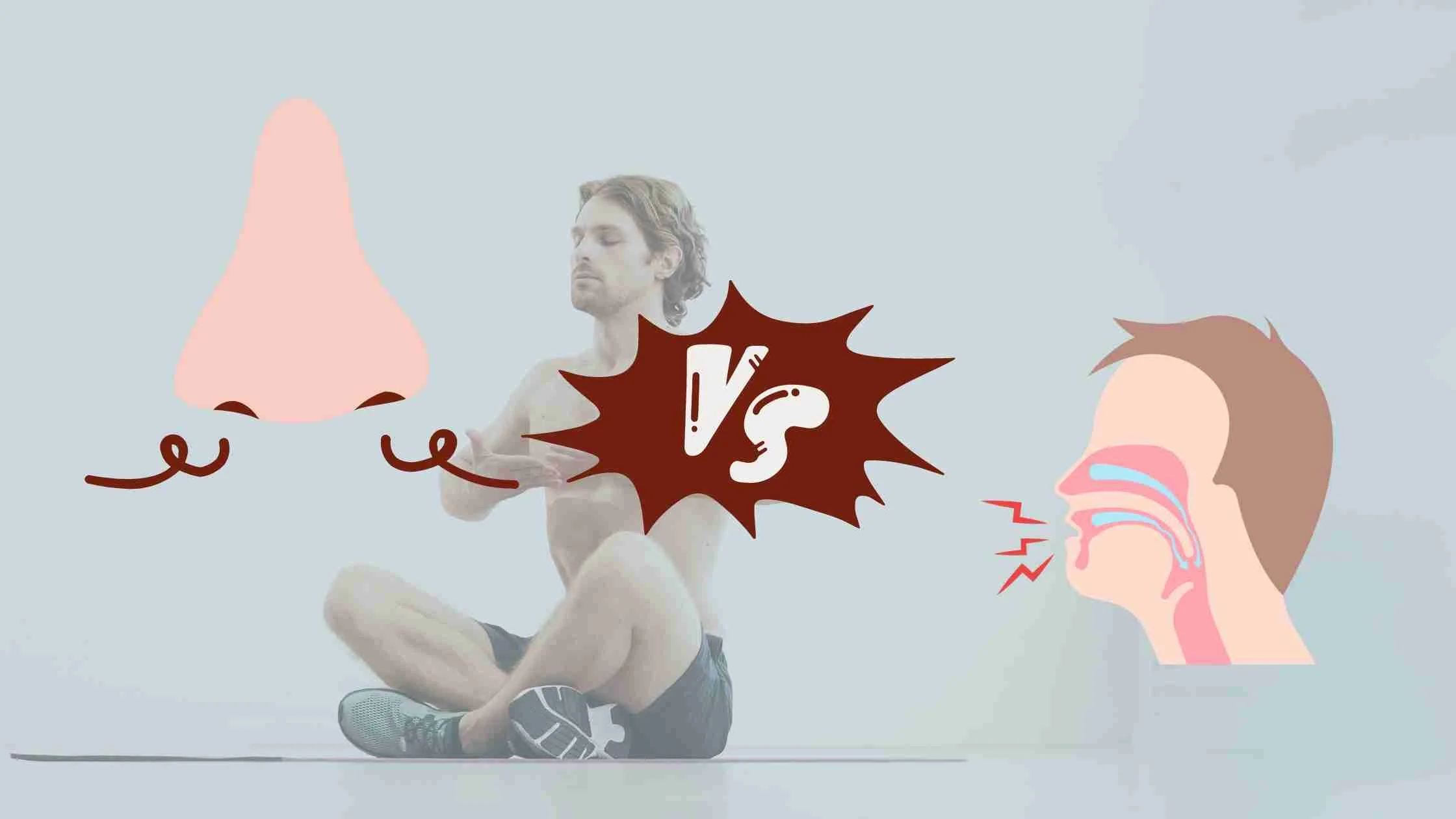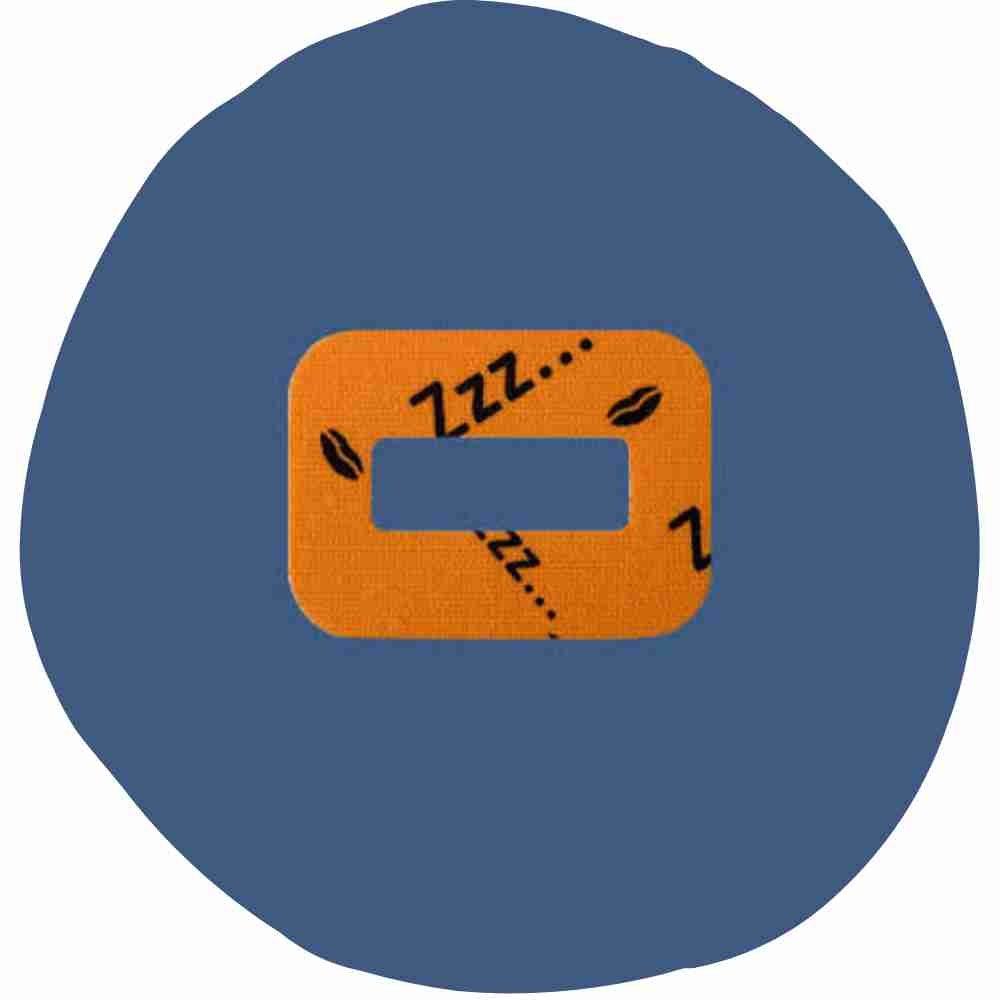Nasal Breathing Vs. Mouth Breathing - Why Nose Breathers Perform Better and Recover Faster
Nasal Breathing vs Mouth breathing - Which Is Better?
Breathing is essential, but have you ever thought about how you breathe? Research suggests that nose breathing boosts athletic performance and quickens recovery.
Breathwork and breathing techniques like Wim Hof breathing are getting a lot of exposure lately with the popularity of cold water exposure and ice baths becoming a widely adopted recovery method and way to improve wellbeing and performance.
Have you ever paid attention to how you actually breathe? Probably not, right? Don't worry, you're not alone. Most people take breathing for granted, but one group, in particular, understands the importance of breathing correctly.
Through correct breathing, you can improve mitochondrial function and impact your energy, sleep, longevity and athletic performance all with focussed attention to your daily breathing habits.
Professional athletes are always looking for those "marginal gains." Recent research suggests that breathing through your nose might just be that little gain they're looking for.
This article takes a deep dive into everything breathing. We'll look at why nose breathing is better than mouth breathing and, more importantly, examine the benefits nose breathing has on athletic performance.
Let's get started!
What is Nose Breathing?
If you're an athlete, there are a number of convincing and persuasive reasons why breathing through your nose is considerably more efficient than mouth breathing.
Depending on the study, though, the definitions of mouth and nose breathing can vary, making it somewhat challenging to clearly identify each. Some researchers define the breathing method from where it originates. For instance, inhaling through your nose but breathing out through your mouth is considered nose breathing. (1)
Interestingly, most yoga practitioners and experts regard both breathing in and out through your nose as nose breathing. When air is breathed through our nose, it's warmed and filtered by an intricate and complex system of bone and tissues called "turbinates." The word "turbinate" also means a spinning top or an inverted cone.
The structure within our noses is rarely symmetrical, meaning that one nostril is often slightly larger or smaller than the other.
Read Also: Best Breathwork Courses, Training, and Certifications of 2024
What Are The Benefits of Nose Breathing?
Our noses were designed specifically for us to breathe, so it goes without saying that breathing through your nose provides several benefits, especially when it comes to athletic performance. Nose breathing helps regulate airflow, allowing for deeper and more efficient breaths that can improve endurance and stamina. Athletes who practice nose breathing often experience enhanced oxygen delivery to their muscles, leading to better performance and quicker recovery times.
But it's not just athletic performance where nose breathing helps. It also strengthens our bodies and can even reduce the chance of developing sleep apnea. Nose breathing encourages the production of nitric oxide, a molecule that helps widen blood vessels, improving circulation and cardiovascular health. This can lower blood pressure and support overall heart health.
Breathing through your nose is also beneficial because the air is filtered and warmed, increasing oxygen intake. The nasal passages are lined with tiny hairs called cilia that trap dust, allergens, and pathogens, preventing them from entering the lungs. Additionally, the nose humidifies and warms the air, which protects the delicate tissues in the respiratory system and optimizes the conditions for gas exchange in the lungs.
Moreover, nose breathing can promote better sleep quality. By encouraging proper airflow and reducing the likelihood of mouth breathing, it helps maintain open airways during sleep, which can decrease the risk of snoring and obstructive sleep apnea. This leads to more restful and uninterrupted sleep, contributing to overall health and well-being.
Incorporating nose breathing into daily activities, whether during exercise or at rest, can have profound effects on physical health and performance. Practicing mindful nose breathing techniques can enhance respiratory efficiency, support cardiovascular health, and promote better sleep, making it a simple yet powerful tool for improving overall wellness. (2)
10 benefits of nose breathing for health and well-being:
Limited exposure to dirty air
Air is warmed and humidified, increasing oxygen
Air is filtered into the veins, arteries, and nerves
Breathing is slow and controlled
Significant improvement in lung capacity
Reduce your risk of hay fever and allergies
Reduces coughing
Boosts your immune system
Reduces the chance of developing a sleep disorder
Promotes oral hygiene
Nose Breathing and Athletic Performance
It's common for most athletes to breathe through their mouth while exercising, especially when putting in big efforts. The main reason is that the faster you breathe, the easier it is to breathe through your mouth with little to no resistance.
A 2018 study examined ten elite runners tasked with running twice on a treadmill, the first time breathing through their noses and the second time through their mouths. Researchers found oxygen consumption was almost identical in the two types of breathing.
However, the respiratory rate was much lower during nose breathing, meaning less work was required. This is great news for athletes because they work much more efficiently during nose breathing. It also means nose breathing may help to quicken recovery.
3 Nose Breathing Exercises To Boost Performance
When it comes to breathing methods, different techniques offer unique benefits for the user. But here, we will be looking at arguably the three most common and effective methods used by elite athletes to perform at the highest levels.
Alternate Nostril Breathing
Alternate nostril breathing is a common method of breathing that has long been used in yoga and other strengthening and preventative activities like Pilates and deep imagery. As the name suggests, alternate nostril breathing requires you to inhale through one nostril while blocking the other. This technique is typically performed by using the thumb and ring finger of one hand to alternate closing each nostril.
Many people find this breathing method great for increasing awareness while improving breathing efficiency. By focusing on the breath and the alternating action, practitioners can develop a greater sense of mindfulness and present-moment awareness. This heightened awareness can extend beyond the practice itself, promoting a more centered and calm state of mind throughout the day.
Alternate nostril breathing can also boost lung function and reduce stress and anxiety. The deliberate and controlled nature of this breathing technique encourages full, deep breaths, which can enhance respiratory efficiency and capacity. By engaging in this practice regularly, individuals may experience improved oxygenation of the blood and better overall lung health.
Moreover, the calming effect of alternate nostril breathing can be particularly beneficial in managing stress and anxiety. The rhythmic breathing pattern helps activate the parasympathetic nervous system, which is responsible for the body's rest-and-digest response. This activation can lead to a reduction in stress hormones, lower heart rate, and a greater sense of relaxation and well-being.
Incorporating alternate nostril breathing into your daily routine can provide a comprehensive approach to enhancing physical, mental, and emotional health. Whether used as part of a yoga practice, during meditation, or simply as a quick stress-relief technique, alternate nostril breathing offers a 360-degree win for overall wellness.
5 steps to Alternate Nostril Breathing:
Sit straight but relaxed.
Place your right hand on your right knee.
Now, block your left nostril using your left finger or thumb and slowly inhale through your right nostril.
Next, alternate the nostril you are blocking and again inhale slowly.
If you're a beginner, repeat the process and aim for between 3 and 5 minutes. Once comfortable, increase the duration to 10 minutes and up.
Diaphragmatic Breathing (Tummy Breathing)
Tummy breathing or "diaphragmatic breathing" involves slow and rhythmical deep breathing through your nose. The aim of this method is to take in as much oxygen as possible to help slow and control both your heart rate and your breathing. By focusing on using the diaphragm rather than the chest, this technique allows for deeper, fuller breaths that engage the lower lungs where a greater exchange of oxygen and carbon dioxide takes place.
To practice diaphragmatic breathing, begin by sitting or lying down in a comfortable position. Place one hand on your chest and the other on your abdomen. Inhale slowly and deeply through your nose, ensuring that your abdomen rises while your chest remains relatively still. This movement indicates that your diaphragm is fully engaged. Exhale slowly and completely through your nose or mouth, feeling your abdomen fall.
Practicing tummy breathing can have numerous benefits for your overall health. It can significantly reduce stress and anxiety by activating the parasympathetic nervous system, which promotes a state of calm and relaxation. Additionally, by slowing your breathing rate, diaphragmatic breathing can help lower blood pressure and improve heart rate variability, contributing to better cardiovascular health.
Athletes often use diaphragmatic breathing to enhance their performance and endurance. By maximizing oxygen intake and promoting efficient gas exchange, this technique can improve stamina and delay the onset of fatigue. It also helps in maintaining focus and composure during high-intensity activities.
Regular practice of diaphragmatic breathing can also aid in managing chronic conditions such as asthma or chronic obstructive pulmonary disease (COPD). By strengthening the diaphragm and improving lung function, individuals with respiratory issues can experience less breathlessness and better overall lung health.
Incorporating diaphragmatic breathing into your daily routine, even for just a few minutes at a time, can yield significant improvements in physical and mental well-being. Whether used as a relaxation tool, a performance enhancer, or a method to improve respiratory health, tummy breathing is a simple yet powerful technique for optimizing oxygen intake and fostering a sense of calm and control.
5 steps of Diaphragmatic Breathing
Sit in a relaxed and comfortable position (you can lie down, too)
With your mouth closed, put your right hand on your chest and your left hand on your tummy.
Now, slowly inhale through your nose. you should feel your tummy rise while your chest remains still.
With your lips pursed, slowly exhale.
Finally, start by repeating for 3 minutes until you gain confidence. Once you feel comfortable, try longer durations, like 5 and 10 minutes.
Breath of Fire
Despite its fearsome name, the "breath of fire" breathing method is an excellent way to calm your nerves while boosting your focus and concentration. Originating from Kundalini yoga, this method involves exhaling quickly while inhaling normally.
Breath of fire has been shown to enhance your respiratory system by engaging your diaphragm. Let's take a look at how to perform the breath of fire breathing technique.
6 steps of the Breath Of Fire:
Sit straight but comfortably with your shoulders relaxed.
Now, put both hands on your tummy with your palms up (you can also place them on your knees)
Next, inhale through your nose, letting your tummy slowly expand.
Powerfully exhale through your nose, allowing your tummy to relax.
Repeat as many times as necessary to feel comfortable, focusing on keeping your breaths the same length.
Finally, quicken both your inhaling and exhaling and repeat for between 30 to 60 seconds.
What Is Mouth Breathing?
Mouth Breathing during sleep is common
Occasionally, we are forced to breathe through our mouths rather than our noses. Generally, this is due to a blocked nose caused by the common cold or allergies like hay fever; this is mouth breathing.
Athletes, however, may also opt to breathe through their mouths when performing intense and sustained bursts of effort. This is because breathing through your mouth can deliver oxygen to the muscles at a much more rapid pace than through the nose.
While mouth breathing isn't inherently bad, it can lead to health problems, including sleep disorders and oral hygiene issues such as gum disease, crooked teeth, and bad breath. (7)
Bonus: Tips for Healthy Breathing
While practicing the breathing techniques outlined above is a surefire way to improve your breathing, you can also improve other elements of your lifestyle to enhance your breathing. Here are three bonus tips to get you started.
Paralysis By Analysis
Although this might sound comical, it's important not to "overthink" your breathing. While it's practical to know how to breathe efficiently, there's no need to go overboard and count every breath every day.
For some people overthinking can lead to stress and anxiety, which is the last thing you want when trying to control your breathing. It's important to remember that breathing is naturally regulated, meaning you don't need to be conscious of it.
In conjunction with the lungs and kidneys, our blood's pH levels are optimized to let our body function at its peak. Receptors then monitor these pH and oxygen levels to signal to our brain that it's time to breathe. What a complex yet awe-inspiring system.
Keep Your Air Clean
Monitoring and filtering the air quality within your house is probably one of the healthiest things you can do. Air filters are fantastic for keeping the air crisp and, most importantly, clean.
Many air filters also allow you to add water to keep the humidity levels up. I add a few drops of eucalyptus to the water, which not only gives off a wonderful smell but also helps to clear out your airways. If you are going outside, plenty of free apps provide all the info you need on the day's air quality.
Maximizing Your Health And Longevity
One of the most valuable things you can do to enhance your breathing is to maintain a healthy lifestyle.
Exercise: First and foremost, ensuring you're getting at least 30 minutes of moderate-intensity daily exercise is critical to your overall health and longevity.
Don't be a glutton: Avoid heavy meals, especially before working out or competing. Big meals can bloat the abdomen, preventing your diaphragm from functioning properly. Energy gels and sports drinks are good ways to keep your energy levels up without feeling bloated.
Maintain a healthy weight: Being overweight or obese significantly increases your chances of developing breathing difficulties, not to mention more serious health conditions like heart disease, diabetes, and cancer.
Quit Smoking: Smoking damages the alveoli contained in our lungs. Alveoli are responsible for transferring carbon dioxide and oxygen in the capillaries and lungs, making them much less efficient. And, of course, as we all know, smoking causes cancer.
Conclusion on Nose vs Mouth Breathing
When it comes to athletic performance, there's no doubt about it; breathing through your nose is quite simply the most efficient way to breathe. Not only does nose breathing boost performance, but it helps to filter out dust, pollen, and other allergens, all of which can cause breathing problems.
As we've seen, mouth breathing can lead to health problems such as bad breath, a dry mouth, and even inflammation of your gums. Furthermore, mouth breathing may cause breathing difficulties, especially for athletes with asthma.
Improving your nose breathing is not difficult; it just requires regular practice and a solid commitment. I highly recommend experimenting with different breathing methods to identify which works best for you.
Remember, if you're serious about boosting your athletic performance, then setting aside 10 minutes a day is a non-negotiable.
Frequently Asked Questions
Do Athletes Use Breathing Techniques?
Put simply, YES. The best athletes in the world know and understand the importance of efficient breathing. Most athletes regularly practice breathing techniques such as the 4-7-8 method and diaphragmatic breathing.
Some athletes also combine meditation and visualization strategies with their breathing practice to maximize their on-field performance. Athletes also use breathing techniques pre-game to calm their nerves allowing them to perform at their best.
Why Do Athletes Breathe Through Their Noses?
There are numerous reasons why athletes choose to breathe through their noses rather than their mouths. Two of the most significant benefits are increased athletic performance and quick recovery. Depending on the intensity, however, athletes may switch to mouth breathing, particularly when efforts are high and sustained.
How Do Snipers Breathe?
Contrary to what most people think, snipers and other firearms competitors do not pause their breathing to take the shot. Rather they pull the trigger between the respiratory pause, which occurs naturally. This natural pause provides snipers with the most stable and balanced time to shoot.
If you'd like to find your natural respiratory pause, simply breathe in, then breathe out and hold for a pause. It's that simple.
References
https://www.sciencedirect.com/topics/medicine-and-dentistry/nasal-breathing
Effect of nasal or oral breathing route on upper airway resistance during sleep
M.F. Fitzpatrick, H. McLean, A.M. Urton, A. Tan, D. O'Donnell, H.S. Driver
European Respiratory Journal Nov 2003, 22 (5) 827-832; DOI: 10.1183/09031936.03.00047903
Dallam, G.M., McClaran, S.R., Cox, D., & Foust, C.P. (2018). Effect of Nasal Versus Oral Breathing on Vo2max and Physiological Economy in Recreational Runners Following an Extended Period Spent Using Nasally Restricted Breathing. International Journal of Kinesiology and Sports Science, 6, 22-29.
Recinto, C., Efthemeou, T., Boffelli, P. T., & Navalta, J. W. (2017). Effects of Nasal or Oral Breathing on Anaerobic Power Output and Metabolic Responses. International journal of exercise science, 10(4), 506–514.
Sinha, A. N., Deepak, D., & Gusain, V. S. (2013). Assessment of the effects of pranayama/alternate nostril breathing on the parasympathetic nervous system in young adults. Journal of clinical and diagnostic research : JCDR, 7(5), 821–823. https://doi.org/10.7860/JCDR/2013/4750.2948
Hamasaki H. (2020). Effects of Diaphragmatic Breathing on Health: A Narrative Review. Medicines (Basel, Switzerland), 7(10), 65. https://doi.org/10.3390/medicines7100065
Tamkin J. (2020). Impact of airway dysfunction on dental health. Bioinformation, 16(1), 26–29. https://doi.org/10.6026/97320630016026










